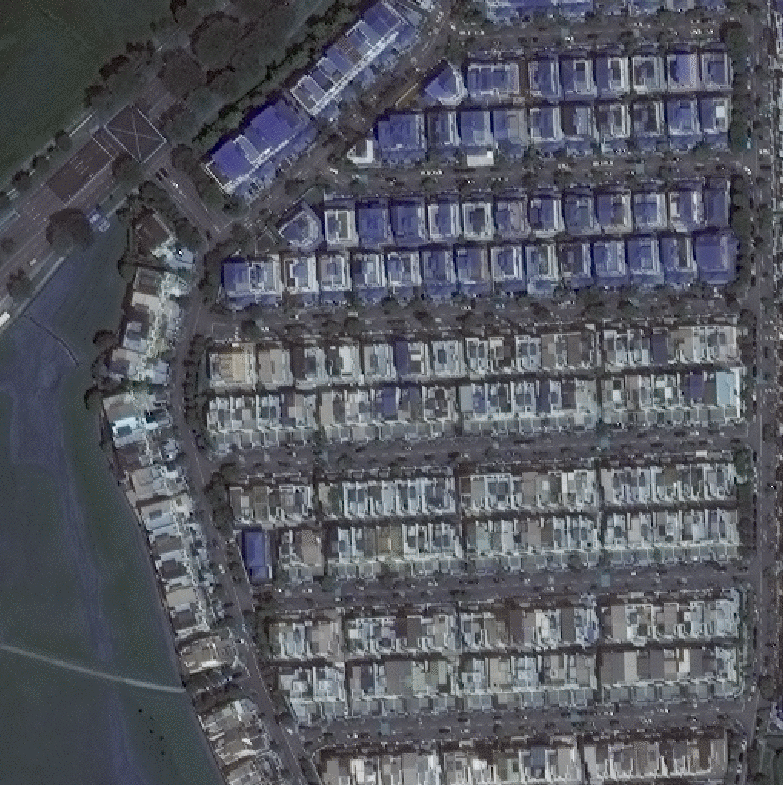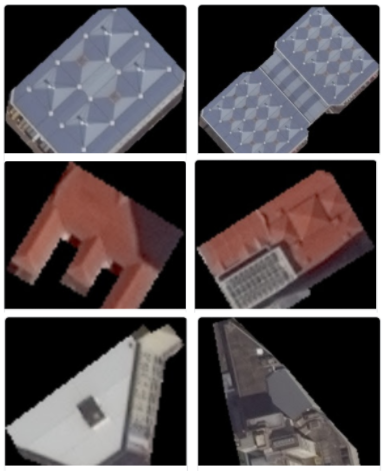Machine Learning For Rooftop Detection and Solar Panel Installment
October 12, 2020

Fact — There’s enough solar energy hitting the Earth every hour to meet all of humanity’s power needs for an entire year.
Let’s face it, what’s cooler than the sun powering your home? And that is quite literally true.
Fun fact — Solar panels also act as “roof shades” to keep buildings cool. They absorb the sun’s rays, directing them away from the roof, whereas a roof without panels would allow heat to penetrate into the building.
As people around the world look for ways to “go green” and protect the earth, solar panels provide an excellent option. But the utility industry needs smart systems that can help improve the integration of renewables in an effective way.
Solar AI, a Singapore based startup incubated as a part of ENGIE Factory, collaborated with Omdena, to pull off a mission to hyper-scale the deployment of distributed solar and the transition towards 100% renewables by modernizing the way rooftop solar is sold.
The problem statement
The rooftop solar assessment process can be time consuming and expensive, taking anywhere between 1 hour to 2 full days to calculate the solar potential of each rooftop. In the solar industry, this has resulted in the cost of sales taking up to 30–40% of total project costs, significantly worsening the unit economics of solar projects.
By automating these evaluations with Artificial Intelligence, Solar AI aims to drastically reduce the cost of this process and make this information easily available for both building owners as well as solar energy companies.
So we had a mission to accomplish within eight weeks:
Combining multiple models that can automatically identify rooftops and detect rooftop features using machine learning like obstacles, material, slopes and area from high-resolution satellite imagery.
The solution
Solar AI provided us with high-resolution satellite imagery in Singapore. With these huge and detailed images in hand, we had a list of tasks to perform.
The 2 GB size of one image fascinated me enough, to begin with pre-processing and creating thousands of smaller tiles out of it — using just a few lines of code bundled up in a function.
 Snapshot of a few tiles created from the huge image / Source: omdena.com
Snapshot of a few tiles created from the huge image / Source: omdena.comThe power of annotations
Even the most technically advanced algorithms cannot address or solve a problem without the right data. We know having access to data is quite valuable, but having access to data with a learnable structure is the biggest competitive advantage nowadays. That’s the power of data annotation.

A quirky image with hundreds of rooftops / Source: omdena.com
Our wonderful team of collaborators volunteered to annotate thousands of rooftops in 500+ tiles. We pulled off a smarter method of annotating the buildings, by mapping the OSM data on the raster layer (TIF format tile) in the QGIS software.
The consistent determination of the annotators resulted in a perfectly labeled dataset for Supervised Machine Learning algorithms.
The food for models was ready!
Scanning images of rooftops via machine learning
The major task was to detect rooftops in a given image using machine learning & computer vision models.
Not just this, we also had to determine their type/structure such as Flat-roof, Hip-roof, Shed-roof, or any other. Hence, this became an instance segmentation problem.
We tried out a number of models such as Mask R-CNN, YOLACT (You Only Look At CoefficienTs), Dectectron2, and more. After training on different batches of annotations as they were delivered, we kept seeing improvement in results. Eventually, the best performing model was selected to go ahead with other tasks.

Source: omdena.com
Zooming in on your rooftops
Now that we had the bounding boxes and mask contours of various rooftops, trapped properly in a data frame, we were ready to start the analysis of individual rooftops. After extracting and zooming into masks of each detected roof, we needed the following attributes:
- Obstacle Detection
- Area of the roof (excluding obstacles)
- The material of the roof
- Detecting faces of Hip/Shed roof
- The orientation of individual slopes
Calculating “Area Available” for panels
For the calculation of a rooftop’s effective area, the area occupied by obstacles has to be subtracted from the whole. So that gives rise to the task of identifying obstacles.
Due to the lack of labeled data for obstacle detection, our genius team shifted their thought process towards an unsupervised approach of edge detection and creating contours. By setting a threshold on contour colors, obstacles were distinguished from plain area to a great extent.
An effective area was therefore mathematically calculated as the difference between total area and obstacle area in terms of pixels, which was then converted into meters squared.

Roof Materials / Source: omdena.com
Quality of the roof
Because solar panels are installed on your home’s rooftop, it is important to understand how different roof materials may influence this process.
Generally, they range from concrete, metal, roof tiles, eternit to composite shingles.
This task also required a labeled dataset, so I decided to jump in to find a solution where we could skip annotations per se. Using Open Street Maps, we created a small but fruitful dataset labeled with roofs and their materials. A deep learning-based Image Classification model was then created which identifies the material of the roof and gives the probability scores for each class.
Which way do solar panels face?

Source: omdena.com
Orientation, or the direction your roof faces, may have a large impact on how productive roof-mounted solar panels will be. Your system will generate the most energy when it gets as many hours of light exposure per day as possible. In most places, the ideal power generation angle is 30–40 degrees.

Source: omdena.com
The task of identifying many faces of a hip roof was a challenging one. After multiple attempts with different approaches, the task team managed to create an appreciable mathematical model that could identify the facets as well as the angles they’re inclined on, using some constructive utility functions. The output was the orientation of different roof facets.
Conclusion: Putting it all together
The outputs of all the tasks were captured systematically in a data frame. Keeping in mind that we computed various attributes based on pixel values, we converted them back to geographic coordinates at the end. This allowed us to project the data on satellite images of a particular CRS (Coordinate Reference System).
After merging everything into an automated pipeline and many rounds of reviews, evaluation, fixing bugs, and testing — our software was ready to be delivered.
Solar AI is extremely happy with the final deliverables, and this is something that makes the experience even more worthwhile. As CEO Bolong Chew puts its:
“This work went beyond our wildest expectations and we’re extremely happy. We set the bar really high and the team delivered. It was an amazing experience.”
This article is written by Harshita Chopra.




